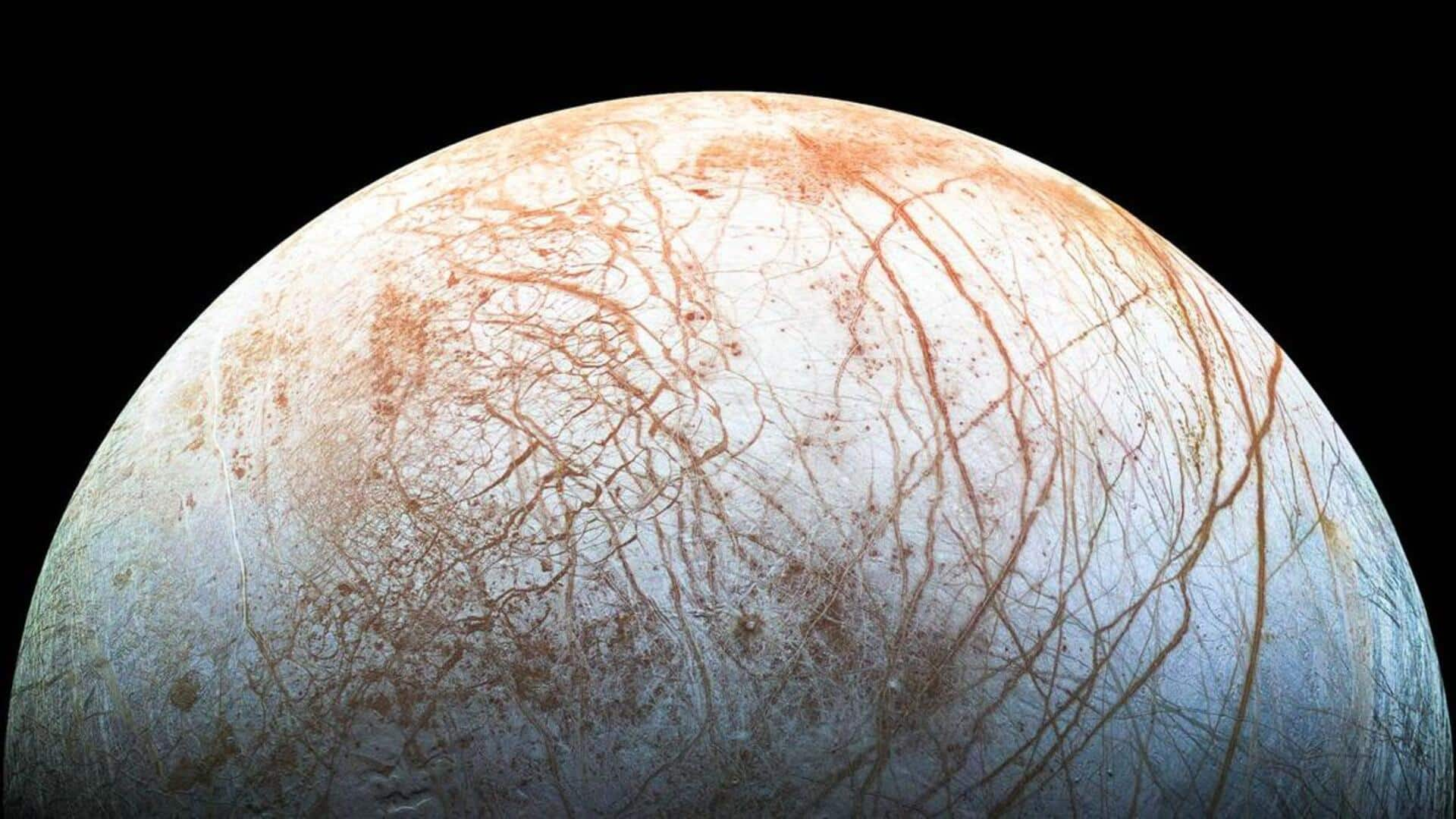
This mystery about Jupiter's moon Europa may finally be solved
What's the story
Scientists at the Southwest Research Institute (SwRI) have conducted lab experiments to solve the mystery of frozen hydrogen peroxide (H2O2) on Jupiter's moon Europa. The study, published in the July 2025 issue of Planetary Science Journal, could explain puzzling observations made by the James Webb Space Telescope (JWST). The JWST had detected unexpected concentrations of hydrogen peroxide in warmer regions of Europa, contrary to earlier lab studies that predicted higher levels in colder polar areas.
Research findings
How the experiments were conducted
The lab experiments, conducted at SwRI's Center for Laboratory Astrophysics and Space Science Experiments (CLASSE), showed that trace amounts of carbon dioxide in water ice can enhance H2O2 production at Europa's surface temperatures. The research was led by Bereket Mamo, a graduate student at The University of Texas at San Antonio. He proposed a series of experiments to investigate the mystery after noticing that terrains with enhanced H2O2 also showed elevated levels of CO2.
Habitability implications
Implications for Europa's habitability
The research also has implications for Europa's habitability. Dr. Ujjwal Raut, a program manager in SwRI's Planetary Science Section and Mamo's advisor, said the presence of H2O2 in an area with CO2, sodium chloride and other species of interest is intriguing. He claimed this finding hints at a chemical cycle where materials rising to Europa's icy surface from a sub-surface ocean are irradiated, creating oxidants like H2O2 that could support life over geologic timescales.
Energy significance
Supporting life on dark habitable ocean worlds
Dr. Ben Teolis, a planetary scientist at SwRI and a co-author of the paper, stressed the importance of chemical energy in supporting life on dark habitable ocean worlds. He said, "When you have a source of carbon from the interior... and you combine it with energy coming from the magnetosphere, it produces new species on the surface." These include H2O2 and other organic compounds that store chemical energy.